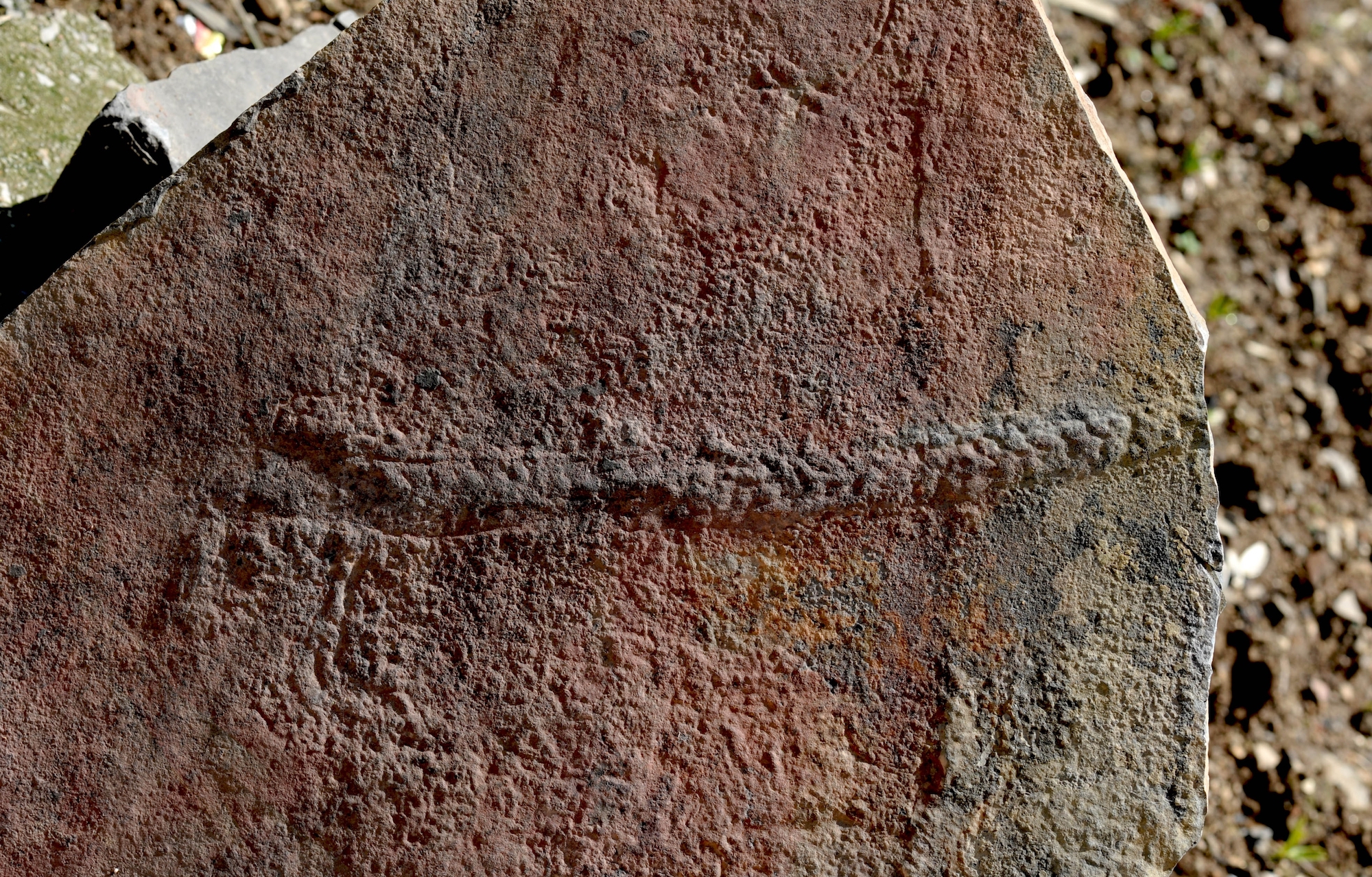Spiky Worm’s Ancient ‘Death March’ Might Be Earliest Known Animal Journey on Earth
This worm might be the earliest known commuter on Earth. (Too bad the journey killed it.)
One day half a billion years ago, when Earth was primarily populated by a menagerie of undersea blobs, a spiky little millipede took a stroll along the muddy ocean floor — and died.
What do we know about this busy undersea commuter? Where was it hustling off to? Did it have dreams of being an actor? Scientists can't say for sure. However, thanks to a remarkable fossil that immortalizes both the worm and its final journey in a slab of rock in southern China, this ancient critter has achieved a posthumous claim to fame that any millipede’s mother would be proud of.
According to a new study published today (Sept. 4) in the journal Nature, the worm's 550 million-year-old fossil may represent the earliest known evidence of an animal walking on Earth's surface, incidentally proving that animals have been mobile since at least the Ediacaran period (635 million to 539 million years ago).
"We now have evidence that segmented animals were present and had gained an ability to move across the sea floor before the Cambrian," Rachel Wood, a geosciences professor at the University of Edinburgh in Scotland who was not involved with the study, said in a statement. "More notably, we can tie the actual trace-maker to the trace."

Unlike other ancient animal trail fossils previously discovered around the world, this one concludes with the remains of the animal that created it, removing a lot of guesswork for researchers. From this fossil — plus 34 other body fossils belonging to the same species and found in the same part of China's Yangtze Gorges — the study authors created a clear picture of the ancient path maker.
The study authors named the newfound commuter Yilingia spiciformis — "Yilingia" for the Yiling district of China, where the fossil was discovered, and "spiciformis" for the creature's spiky appearance. Like a millipede plated in sharp scales, the creature had a long, thin body spanning up to 4 inches (10 centimeters) long and about 1 inch (3 cm) wide made up of about 50 symmetrical segments. Yilingia dwelled on the muddy ocean floor, where it dragged its stringy body around, leaving trails up to 23 inches (58 cm) long. The researchers couldn't place Y. spiciformis definitively on the animal family tree, but suspect it's related to arthropods (tiny invertebrates that include crustaceans and millipedes among their ilk) or annelids (segmented worms).
Significantly, Y. spiciformis shows bilateral symmetry, meaning the left and right side of its body are identical, just like humans and most other animals. This may be a characteristic inherent to all animals that evolved to move across Earth’s surface, the researchers wrote, which could make the worm’s small steps across the ocean a giant leap for animal-kind.
Sign up for the Live Science daily newsletter now
Get the world’s most fascinating discoveries delivered straight to your inbox.
"Mobility made it possible for animals to make an unmistakable footprint on Earth, both literally and metaphorically," study co-author Shuhai Xiao, a professor of geosciences with the Virginia Tech College of Science, said in the statement. "[Bilateral] animals and particularly humans are movers and shakers on Earth. Their ability to shape the face of the planet is ultimately tied to the origin of animal motility."
So, this little critter may never have gotten where it was going — but perhaps the final underwater schlep paved a trail for millions of descendants to go the distance.
- These Bizarre Sea Monsters Once Ruled the Ocean
- Photos: 'Naked' Ancient Worm Hunted with Spiny Arms
- Photos: 508-Million-Year-Old Bristly Worm Looked Like a Kitchen Brush
Originally published on Live Science.

Brandon is the space/physics editor at Live Science. His writing has appeared in The Washington Post, Reader's Digest, CBS.com, the Richard Dawkins Foundation website and other outlets. He holds a bachelor's degree in creative writing from the University of Arizona, with minors in journalism and media arts. He enjoys writing most about space, geoscience and the mysteries of the universe.









